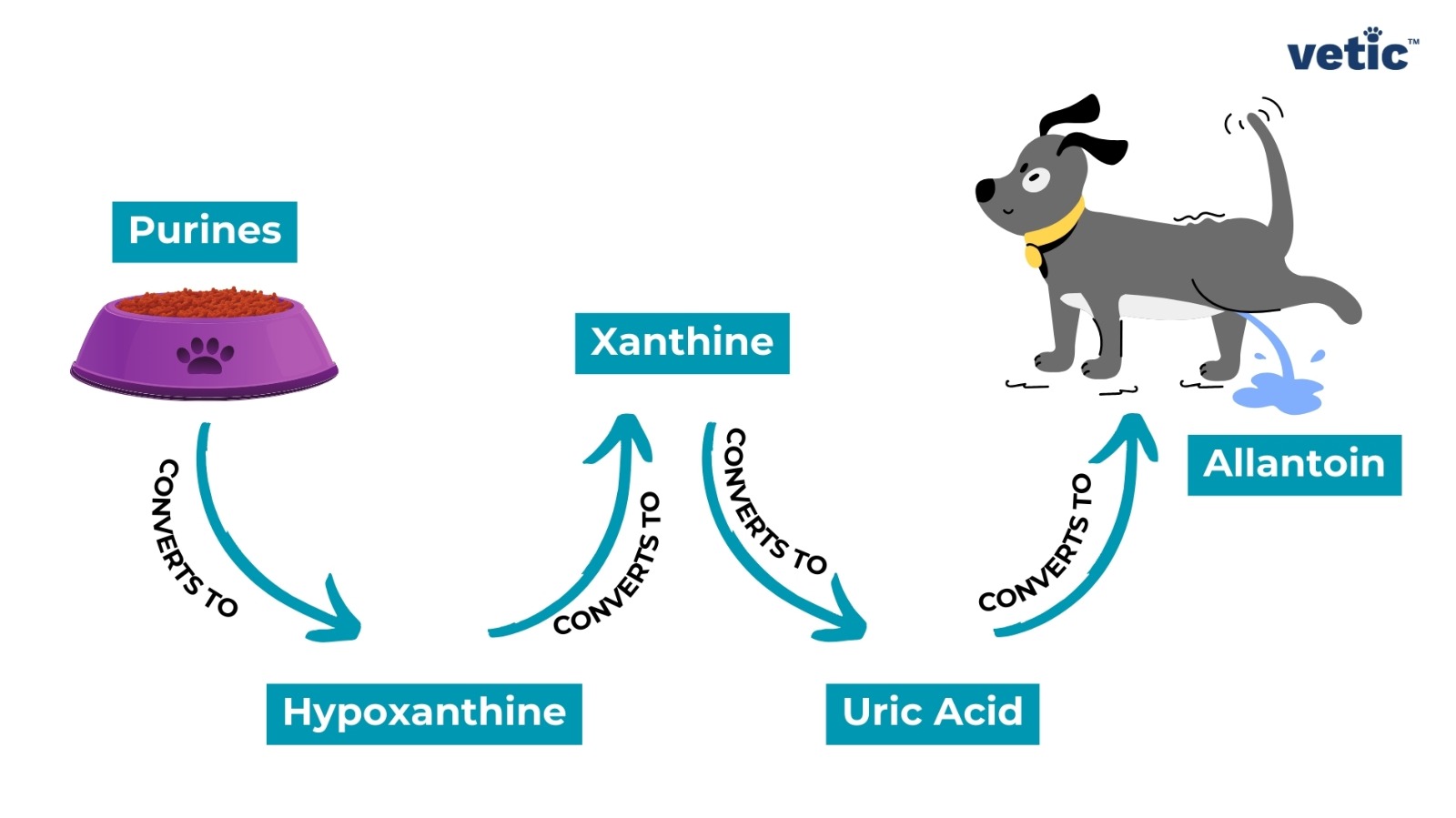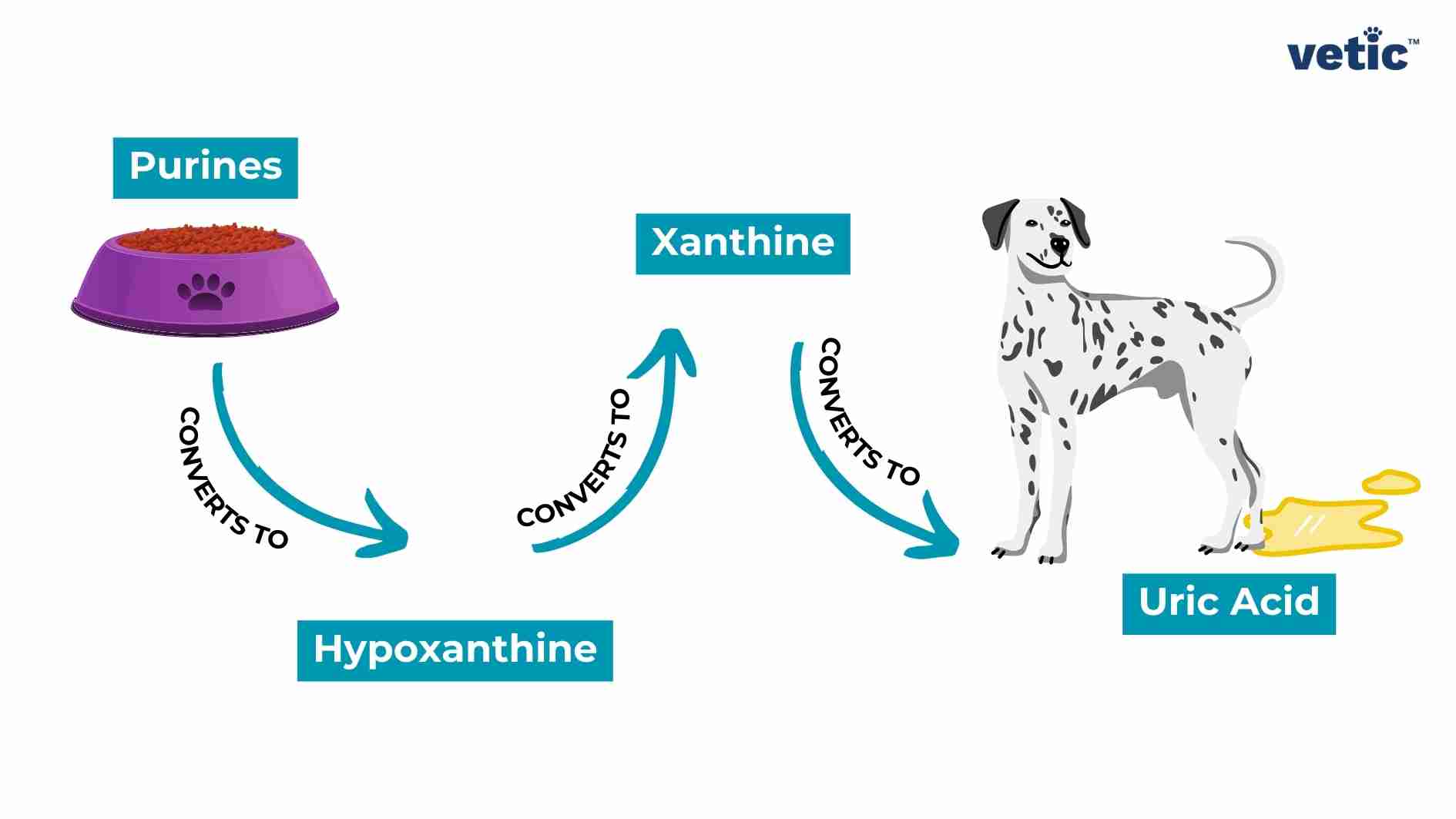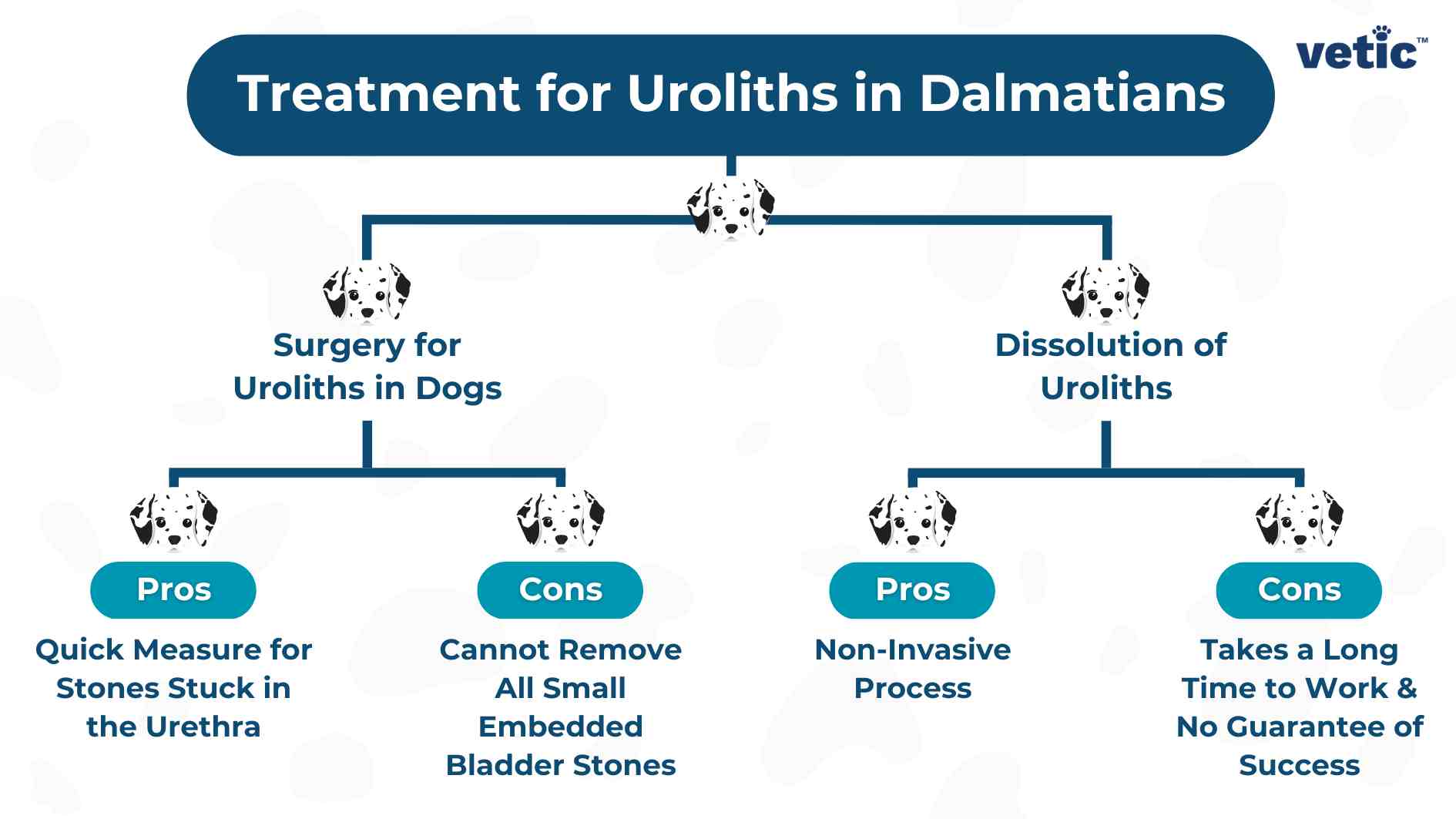Dalmatians are unique-looking breeds with prominent black spots. This breed is truly unique since they often have a genetic mutation that doesn’t allow them to remove uric acid from their system. Uroliths in Dalmatians is a common diagnosis across the world. Let’s see what it means and how you can keep your pup safe.
Most purebred Dalmatians are prone to developing bladder, urethra and ureter stones (urolithiasis). It happens due to a genetic mutation in the Dalmatian breed. Their unique liver and kidney functions don’t support the conversion of uric acid to an easily dissolvable form.
Formation of Uric Acid Stones (Uroliths) In Dalmatians
Uric acid stones are formed from purines. Normally, almost all dog breeds can get rid of purines by converting them to another compound called allantoin. Allantoin readily dissolves with the body’s fluids and is easily excreted through urine.

Dogs receive purine mostly from meat. Sadly, Dalmatians with the specific mutation cannot convert uric acid to allantoin. They can eliminate only limited amounts of uric acid with their urine which causes a uric acid “backup” in their excretory system.

Since Dalmatians are unable to convert uric acid to allantoin, almost 80% bladder stones in dogs come from Dalmatians only. The remaining 20% bladder stones come from dogs such as the English Bulldog and other breeds with the same mutation, or dogs with compromised liver function.
Are All Dalmatians At Risk Of Developing Uric Acid Stones Or Urolithiasis?
Some Dalmatians who circulate a high level of uric acid form uroliths more rapidly. Other dalmatians who do not have a high level of uric acid in their serum (blood) may not form uroliths at all.
The common factor among all stone forming dalmatians is genetics. Research shows that male dalmatians are more predisposed to uroliths as compared to female dalmatians.
The average age of urolithiasis in dalmatians is around 4.5 years. And the risk of uroliths actually decreases as the dog ages.
Interestingly, although all dalmatians excrete high levels of uric acid, only around 10% of them form uroliths.
How has Selective Breeding Helped Reduce the Problem of Urolithiasis in Dalmatians?
In the late 70s and early 80s, breeders in the US began crossing Dalmatians with Pointer breeds. And crossing the first generation with purebred Dalmatians for at least the next five generations. The result was a breed that is 99% identical to Dalmatians, but without the risk of urolithiasis.
In 2011, the American Kennel Club (AKC) recognized this breed as purebred Dalmatian as well.
What Are The Signs Of Uroliths In Dalmatians?

If you have a Dalmatian, you need to be vigilant about the signs of urolithiasis. Getting regular blood tests isn’t enough to ensure that your pup is free from bladder stones, ureter and ureteral stones.
The signs of uroliths in dalmatians include –
- Bloody urine
- Frequent urination
- Strained urination
- Crystals in the urine
Diagnosis of Uroliths in Dalmatians
Simple radiography isn’t enough to see the bladder stones or urethra and ureter stones. Your veterinarian may recommend contrast radiography for seeing the stones and their locations.
Remember, uric acid crystals are considered normal in the urinalysis of a dalmatian since they already have high uric acid in their pee. It is considered abnormal for other breeds and requires further investigation.
High uric acid in the blood or urine of Dalmatians doesn’t indicate the presence of uroliths.
Treatment for Uroliths in Dalmatians
If your dog is unable to pee and has not peed in longer than 12 hours, it’s time to see the veterinarian. Your dog may have stone(s) obstructing his urethra. It is rather uncommon in female dogs, so if your female dog is unable to pee, you may be looking at a different kind of emergency.
Nonetheless, visit your emergency veterinarian since the urethra needs to be cleared and your dog may need a urinary catheter to be placed to push the urolith back into the bladder.

Surgery for Uroliths (Bladder Stones) in Dogs
Pros of Surgery:
Surgery for uroliths in Dalmatians is the fastest way to remove bladder stones. However, it is an invasive surgery and only done when it’s the last remaining option.
The stones are removed from the bladder and sent for analysis since Dalmatians may as well form struvites and oxalate crystals.
The bladder is flushed and closed.
Cons of Surgery:
Surgery is not only costly, but it does not guarantee the removal of all stones from the bladder. Since Dalmatians form multiple stones quickly, there can be hundreds of them embedded in the bladder.
Surgical removal and flushing of the bladder will not prevent the formation of uroliths.
Removal of Uroliths (Stones) via Dissolution
Stone Removal via Dissolution Overview:
Pro of dissolution of stones:
Non-invasive process that requires zero recovery time. It is ideal for older dogs who cannot undergo urolith removal surgery for other health complications.
The primary steps include of dissolving uric acid stones using urine –
- Control of bladder infection.
- Use a special low-purine diet (not for puppies).
- Administer allopurinol medication twice daily.
- Monitor and adjust urine pH if needed.
Dietary Measures:
- A commercial or prescription diet with low protein is recommended.
- Choose a low-purine diet.
- Ensure the diet helps dilute uric acid in urine.
Medication:
- Use allopurinol to dissolve uric acid stones.
- Adjust dosage after stones are dissolved for prevention.
- Learn about allopurinol, including side effects and interactions.
Urine Alkalinization:
- Monitor urine pH regularly.
- Use dipsticks for home monitoring.
- Balance alkalinization carefully to avoid other stone types.
Monitoring Progress:
After a month, the vet will assess the stone size via radiographs, check urine for crystals and pH and continue this process if stones are getting smaller, switch to prevention if gone.
Cons of dissolution:
- It takes months to dissolve stones.
- Success is not guaranteed.
- Monthly tests can become costly.
- Possibility of urethral obstruction in male dogs.
- Average time for dissolution: three to four months.
Prevention and Monitoring After Stone Removal
Diet plays a huge role in the prevention of stone formation in Dalmatians and even other breeds. If your dog has been diagnosed with uroliths, your veterinarian will likely run an analysis of the stones (if your dog has been operated on or if they have managed to pee one out).
Depending on the nature of the urolith (uric acid, struvite or oxalate), your veterinarian will formulate a personalised diet for your dog.

It will include struvite or oxalate prescription food, and food that’s considered considerably purine-free, such as –
- Whole grain cereals without yeast
- Cheese
- Eggs
- Fruits
The veterinarian may recommend multiple supplements that help in the dissolution of existing stones and prevention of further uric acid accumulation.
You also need to consider contrast radiographs or imaging with ultrasound to ensure that your pup is free from uroliths.
At the same time, your veterinarian is likely to recommend metabolic tests including LFT and KFT to monitor the liver and kidney function of your dog.
If you have a dalmatian pup, book LFT, KFT and contrast radiograph as a part of their preventive healthcare, today! Speak with the veterinarian to know more.
